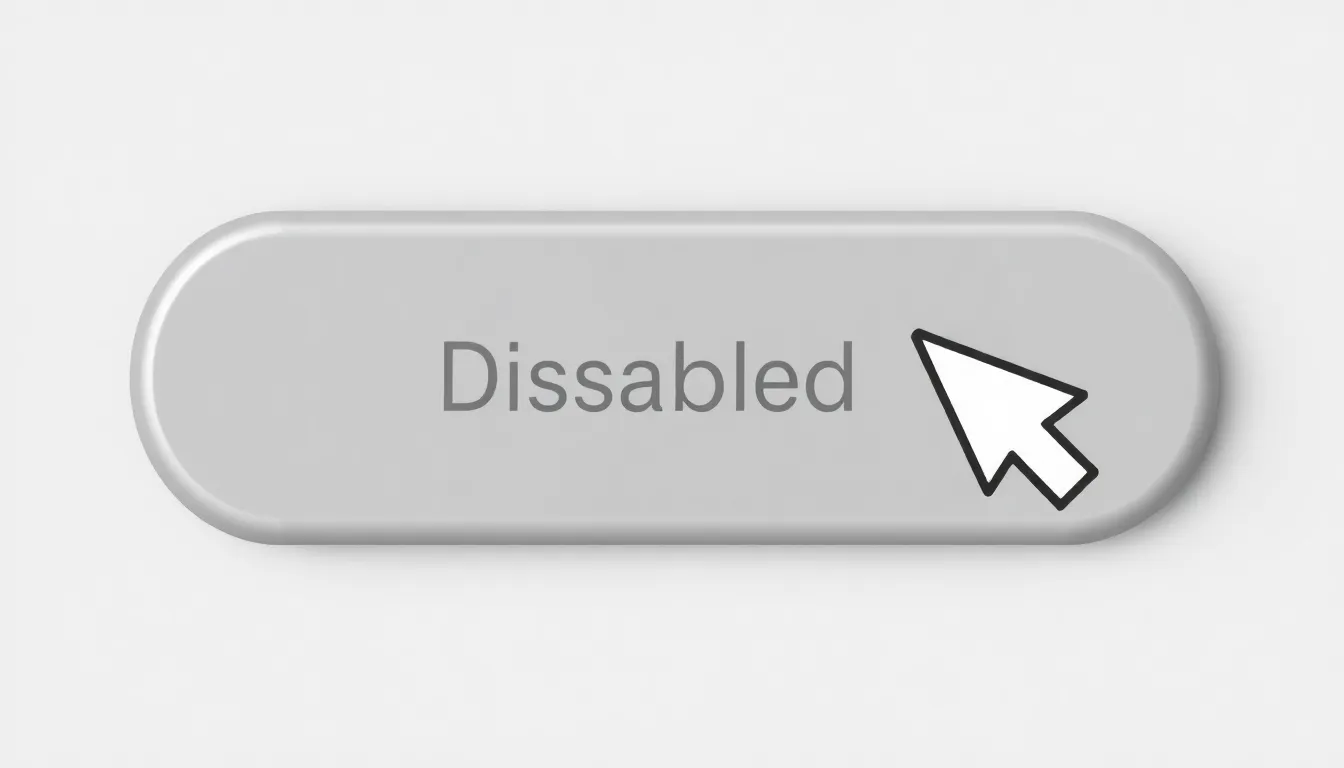In the bustling world of web development, JavaScript reigns supreme, making websites interactive and engaging. But what happens when a button needs a timeout? Whether it’s to prevent users from clicking like a kid in a candy store or to ensure that a critical process runs smoothly, knowing how to disable a button with JavaScript is a game changer.
Table of Contents
ToggleUnderstanding JavaScript Disable Button
Understanding how to disable a button in JavaScript enhances web application functionality. This technique improves user experience by managing button states during critical operations.
What Does Disabling a Button Mean?
Disabling a button means making it unresponsive to user input. When a button is disabled, users cannot click or interact with it until it is reactivated. This state is crucial during processes like form submissions or data loading. Developers can set button properties in HTML and manipulate them using JavaScript to reflect this change visually and functionally.
Why Disable a Button in JavaScript?
Disabling a button prevents users from making excessive clicks during key operations. It ensures smooth execution of processes by limiting actions that could disrupt functionality. For example, disabling a submission button after the first click protects against duplicate submissions. Additionally, this feature can guide users, indicating when an action is not currently available. Proper implementation requires minimal code, yet it significantly enhances the user experience and overall site reliability.
Methods to Disable a Button Using JavaScript

Disabling a button in JavaScript enhances user experience during critical operations. Various methods exist for achieving this functionality.
Using the Disabled Property
The disabled property directly alters a button’s state. When a developer sets this property to true, the button becomes unresponsive to user clicks. For example, button.disabled = true; effectively deactivates the button. Users can re-enable the button by setting the property back to false. This method is straightforward and widely used for controlling button interactivity during form submissions or loading processes.
Using CSS Classes for Disabled State
Implementing CSS classes can visually indicate when a button is disabled. A developer can create a class such as .disabled that changes the button’s appearance. For instance, changing the cursor to “not-allowed” or altering the background color signals its inactive state. By combining JavaScript with CSS, the developer can toggle the class: button.classList.add('disabled'); to indicate it’s disabled visually. Users benefit from clear feedback, enhancing user experience during critical operations.
Best Practices for Disabling Buttons
Disabling buttons effectively enhances user experience and accessibility. Following best practices ensures developers achieve these goals.
User Experience Considerations
Consider user experience when disabling buttons. Users often appreciate clear feedback on button states. Using visual cues like changing text or button color communicates that a button is inactive. Displaying loading indicators on buttons can further inform users that a process is in progress. Additionally, preventing excessive clicks reduces frustration and maintains application functionality. Elements like tooltips can explain why a button is disabled, enhancing understanding. A responsive design that allows smooth transitions contributes to an overall positive experience.
Accessibility Factors
Accessibility plays a critical role in button management. Ensure disabled buttons are still recognizable to all users, including those relying on assistive technologies. Use ARIA (Accessible Rich Internet Applications) labels to describe button states clearly. Maintain keyboard accessibility so users can navigate disabled buttons without obstacles. Colors must contrast well to assist users with visual impairments in distinguishing button states. Implementing these factors creates a more inclusive environment, ensuring all users can interact meaningfully with the web application.
Mastering the art of disabling buttons in JavaScript is vital for any web developer aiming to create a seamless user experience. By implementing this feature, developers not only prevent excessive clicks but also ensure that critical processes run smoothly. The combination of JavaScript and CSS can enhance visual feedback, making it clear to users when an action is in progress.
Moreover, adhering to best practices around accessibility ensures that all users can engage with web applications effectively. This thoughtful approach to button management fosters a more reliable and enjoyable interaction for everyone. Embracing these techniques will undoubtedly elevate the quality of web applications and boost user satisfaction.




